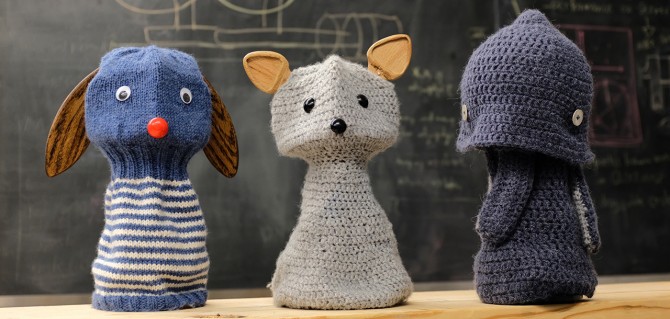The soft, comfy, social robots are coming

Researchers from Cornell University noted that when it comes to ‘social robotics’ – robots who are autonomous and communicate with humans following social behaviours and rules (such as the Miko robot, a tool to “educate children, understand their emotions, play games and narrate stories”) – all look the same – hard, plastic and cold.
How then, the researchers wondered, could these robots be made more appealing to children, and be made to look more like friends around the home or early childhood education and care (ECEC) space, encouraging children to interact and use their services?
The answer, according to Guy Hoffman, assistant professor at Cornell, lay in robots built from warmer, homier materials, such as wood and wool; he also imagined robots that could be customised by their owners, so each would be unique. A friend gave him crocheted models of his robots and he thought: what if the robot itself was crocheted? So he learned to crochet.
Then he watched another friend crochet part of the robot far faster than he could. “That made me think people who are not engineers could also participate in making a robot,” he said.
These ideas led Hoffman to create Blossom – a simple, expressive, inexpensive robot platform that could be made from a kit and creatively outfitted with handcrafted materials.
His paper about the process, Blossom: A Handcrafted Open Source Robot was published in March in the Association for Computing Machinery Transactions on Human-Robot Interaction.
Mr Hoffman said the ultimate aim of the project was to empower people to build their own robot, but without sacrificing how expressive it is. “Also, he said, it’s nice to have every robot be a little bit different. If you knit your robot, every family would have their own robot that would be unique to them.”
The mechanical design, developed by a doctoral student working under Mr Hoffman, is centred on a floating “head” platform using strings and cables for movement, making its gestures more flexible and organic than those of a robot composed of rigid parts.
Blossom can be controlled by moving a smartphone using an open-source puppeteering app; the robot’s movements resemble bouncing, stretching and dancing. The cost of the parts needed to assemble a Blossom is less than $250, and researchers are currently working on a Blossom kit made entirely of cardboard, which would be even cheaper, and more accessible to those in ECEC services.
The Blossom robot has been designed to be simple, and therefore, Mr Hoffman said, it has a variety of potential uses, including teaching young children about robotics.
In a case study, children aged from four to eight had a chance to control and make accessories for Blossom at a science fair. Some children created accessories, such as appendages or jewellery, while others controlled the robot so the new items could be attached, illustrating how Blossom could inspire collaboration.
“The children also had additional expectation of the robot’s movement, such as making it locomote and jump. These expectations were emphasised by the fact that several children chose to make appendages such as legs and wings,” the authors wrote.
Mr Hoffman said his team also has been working on an algorithm to make Blossom react to YouTube videos – performing a certain dance in response to a certain song, for instance, building on previous research showing that a robot’s response to listening to songs can influence a human’s reaction. This might be particularly useful in modeling behavior for children with autism, Mr Hoffman said.
“It’s meant to be a flexible kit that is also very low cost. Especially if we can make it out of cardboard, you could make it very inexpensively,” he said. “Because of computation becoming so powerful, it could be a really open-ended way for people to do whatever they want with robotics.”
The work undertaken by Mr Hoffman was partly supported by a grant from Google Creative Robotics, with Blossom marked as a collaboration between Cornell University’s Human-Robot Collaboration and Companionship Lab and Google Creative Technologies Singapore.
Popular

Quality
Practice
Research
Early help, lasting impact: the success of a Specialist Equipment Loan
2025-11-25 07:30:39
by Fiona Alston

Research
Landmark report warns wellbeing of Australian children at a crossroads
2025-11-25 07:00:53
by Fiona Alston

Quality
Policy
Practice
Provider
Research
EYS program delivers strong outcomes, but long-term funding remains critical
2025-11-25 07:45:35
by Fiona Alston















